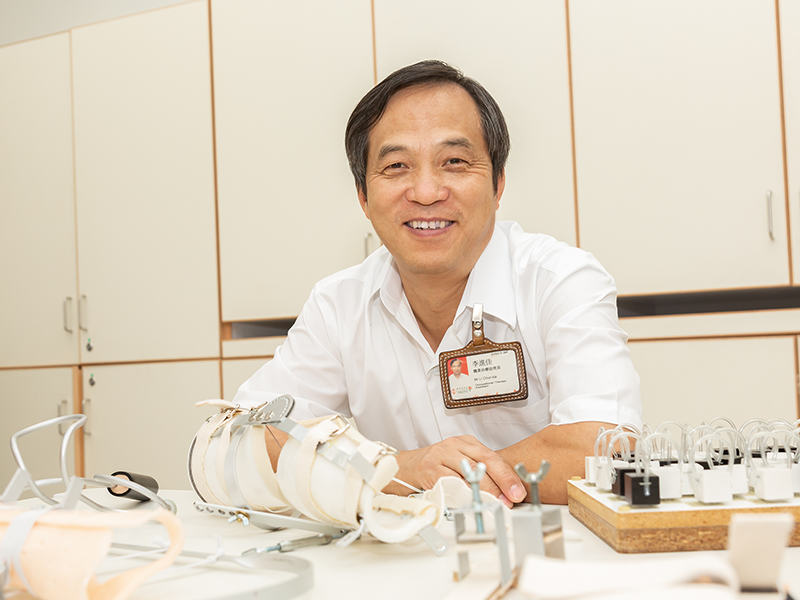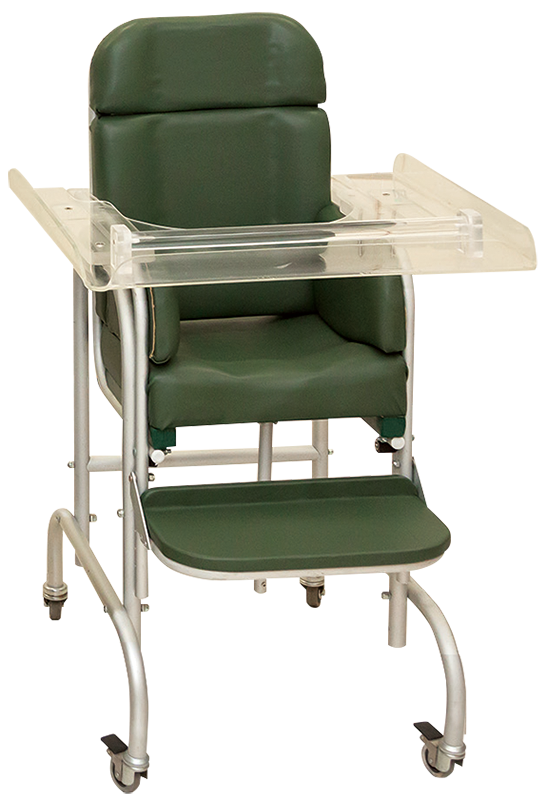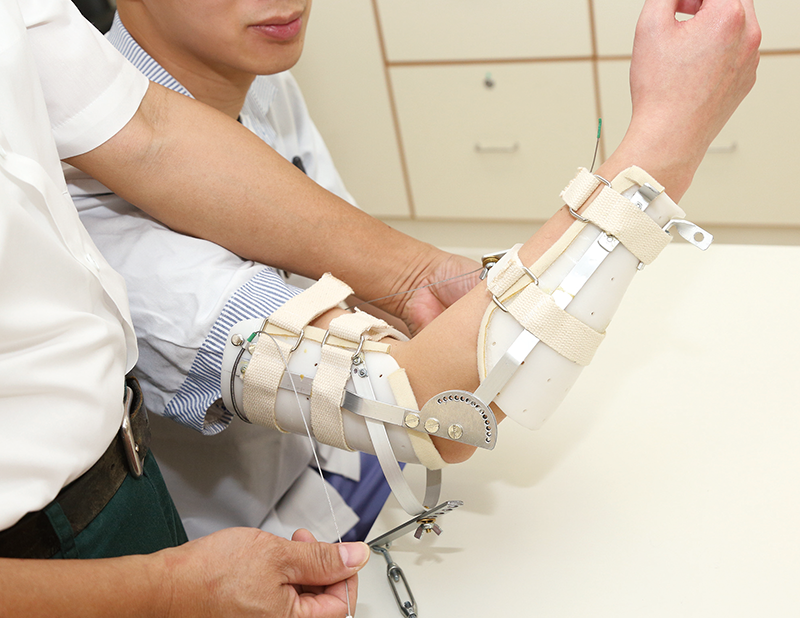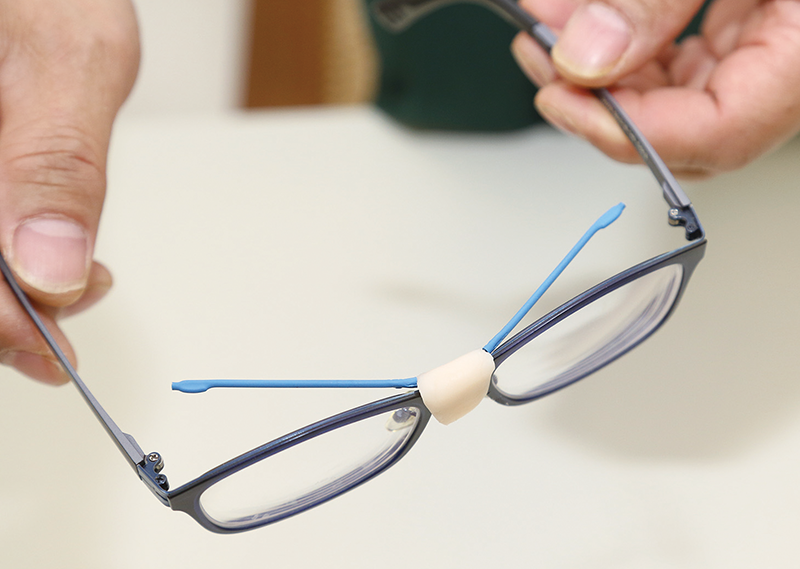Triple skill craftsman smoothens rehabilitation journey
Li Chun-kai
Occupational Therapy Assistant
Alice Ho Miu Ling Nethersole Hospital
With a pair of good hands, Occupational Therapy Assistant Li Chun-kai has loved woodwork, metalwork, and sewing since childhood. These three skills, essential craftsmanship required in the making of various gadgets for rehabilitation, have proved to be immense assets for him at work over the past 20 years. Kai makes specially designed rehabilitation equipment for patients, drawing inspirations from daily life as well as meeting the needs of patients. In his spare time, he enjoys scouting around for various materials and tools.
The gadgets made by Kai are varied and widely used by different patients, such as patients injured on duty on training before returning to work, dementia patients practising their memory, stroke patients learning activities of daily living. “I support occupational therapists by making assistive devices which are tailor-made to suit individual patient’s needs.” Kai says humbly, “Practice makes perfect. The secrets of success are dedication and communication. I engage patients in training, listen to their thoughts and encourage them. Patients feel my passion and positive ambience, hopefully they are able to complete the journey of rehabilitation without much stress.”
Being a devoted employee, Kai has never been late to work in Tai Po even though he lives in Tin Shui Wai. His compassion and ingenuity are not limited to therapy rooms. After the Sichuan earthquake in 2008, Kai helped occupational therapists and doctors by producing stump socks, pressure garments, and assistive devices for victims. Kai also supports other departments in the hospital by making equipment such as knee X-ray positioning platform and high-low chairs for patients recovering from hip surgery. No wonder Kai is highly trusted by patients and colleagues for his passionate commitment and positive work attitude.
Kai’s works of creativity
Grow-with-the-child chair
Tailor-made for children with cerebral palsy, this chair can be easily adjusted as the children grow. Used for daily activities such as playing, eating and learning, the tilt-in-space chair is light-weight and ensures a child’s sitting posture to prevent them from leaning forward. It is very functional and affordable. The chair is welcomed by parents and teachers who find it much better than commercially-available products.
Materials: Metal, wood, synthetic leather, strap
Turn-buckle splint
This device fixes on a patient’s arm and is adjustable. It helps patients with bone fracture and dislocation to resume the ability to bend and stretch their arms.
Materials: Metal, plastic, Velcro strap
Eyelid-lifting device
Patients who suffer from neurological problems sometimes develop drooping eyelids which interfere their vision. This device fits to patients’ own glasses and allows them to see clearly at all times.
Materials: Wire, hot-melt adhesive
● Insights from outstanding colleagues
OUTSTANDING STAFF
● List of Outstanding Staff Award winners
● Zealous physician rises up to challenges
● Veteran nurse advocates multifaceted wound care development
● Triple skill craftsman smoothens rehabilitation journey
● Passionate guardian upkeeps hospital hygiene
● Psychiatrist stands up for community rehab
OUTSTANDING TEAM
● List of Outstanding Team Award winners
● Round-the-clock invincible heart protectors
● Four must-haves of life-saving CCL
● Seven hospitals go for eco-culture
● Seamless palliative care makes kids’ lives complete
● Caring towards a less distressing departure
● Lights in darkness: What team members do
YOUNG ACHIEVER
● List of Young Achiever Award winners
● Nurse-paraglider opens patient’s heart over coffee break
● Saving lives in sleepless nights
● Cleft lip babies glow with smiling faces again
● Regain mobility, regain hope
● Evidence-based nursing care without walls
● And so rehabilitation goes… in the neighbourhood
● Pass on Dad’s spirit of teaching
● Trust your heart, be a role model
● Pioneer VR in simulation training
● Innovation always on doctor’s radar
● Building services no trifle in hospital operations
● Rheumatic pain eased with close monitoring
MERIT STAFF AND TEAMS




